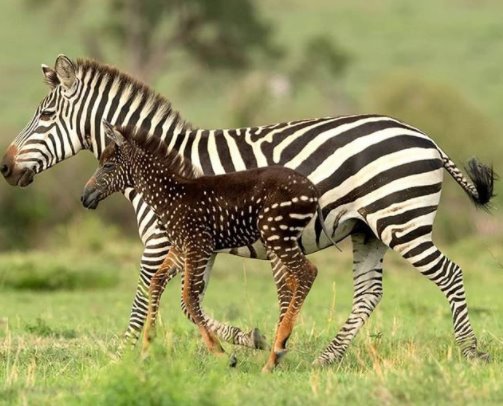

I was one of the last few to witness Tira in his habitat with his mom before he was translocated to Tanzania for safety reasons. Nature has its own ways of creating wonders and they are just beautiful to watch in the wild in their own habitat. According to Discovery, only around 6 percent of the world's big cats are born with melanism. The term “black panther,” is a blanket term used to describe a dark leopard or jaguar. While most ‘melanistic’ animals become less conspicuous to predators, the black panther uses this to his advantage for hunting in the dark. Melanism is most common in cats, more popularly the jaguars and leopards.

Melanism can create all-black animals that are so beautiful, it’s hard to believe they’re real. Opposite of this condition is called Albinism where a certain trait when inherited, interrupts the production of the dark coloured pigment and this results in stunning white animals.
#Spotted zebra folal skin
The increased development of the dark-coloured pigment not just in the hair/ fur of the animal but also skin is referred to as melanism. Melanism, as we all know is a rare condition in animals that create some interesting looking animals. Today, let me try and introduce melanism in some detail. Interesting fact: TIRA was named after a very popular Tracker/ Guide in the mara, Anthony Tira who first spotted him playing with his mother. The handsome boy TIRA is stunning to a human eye. Melanism in Animals Some time back when I had first posted the picture of Tira – The Spotted Zebra, I had touched upon melanism as a topic as it interested me. Ratish Nair also went to Kenya to see the rare white-dotted zebra “Research on other species has shown that, while it is harder for a predator to target an individual in a group, it is easier if an individual is different,” Larison said. He explained that most zebras with melanism condition “probably” do not survive long. Larison said that Tira’s future is likely unknown. Here are more photos taken by different nature photographers:Ī Maasai guide spotted first the male foal and called it “Tira”. Larison is currently studying the evolution of zebra stripes at the University of California in Los Angeles. “At first glance he looked like a different species altogether,” Liu said, adding that he went to Kenya to search for rhinos.īiologist Ren Larison explained that pseudomelanism is a “rare genetic mutation” in animals where they appear to have some “sort of” abnormality in stripe pattern. Tira, however, has patterns that appear as polka dots! ◼️⚪️ I hope the experts will look into this case and share some interesting discoveries soon! post shared by Frank Liu on at 4:17am PDT This morning we were one of the first ones to visit Tira! Few years ago there was a similar case, however that zebra still maintained the stripes and brush-like tail. Last night a Maasai guide discovered an one of a kind genetically mutated baby zebra in Maasai Mara and named it after his surname – Tira.


 0 kommentar(er)
0 kommentar(er)
